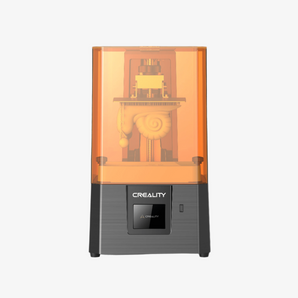Resin 3D printers are well-known for their high resolution and fine detail, but let’s be honest—resin printer safety concerns often come hand in hand with the excitement. Whether you're a beginner or a seasoned maker, questions like “Is the resin toxic?” or “Will fumes affect my health?” are valid and common.
The good news? Safe resin printing is absolutely possible—if you follow the right steps. Let’s walk through the top user concerns and how to overcome them in practical steps.
The Top Resin Safety Concerns (That You Probably Share)
Let’s face it—when it comes to resin, users have a few very real concerns:
“What happens if this gets on my skin?”
Most UV-curable resins are irritants. Long-term exposure without protection can lead to skin allergies or rashes.
“Are the fumes dangerous to breathe in?”
Uncured resin can release VOCs (volatile organic compounds), especially in poorly ventilated spaces. Headaches and nausea aren’t uncommon for users without proper airflow.
“How do I dispose of the waste?”
What do you do with leftover resin, IPA wash, or failed prints? Many users are unsure how to handle them without harming the environment—or breaking the rules.

Step 1: Start With Safer Resin and Smarter Machines
Not all resins are equally hazardous. Some formulas are specifically designed to be low-odor, low-irritant, or even plant-based—and choosing the right material makes everything easier (and safer) from the start.
Pro tip: Look for water-washable or “eco” resins that don’t require harsh solvents—and always check for independent safety certifications like RoHS and REACH, which ensure the resin meets strict European health and environmental standards.
Your printer setup also plays a key role in safety. Many—including the HALOT series from PioCreate—feature a fully enclosed design that helps contain resin fumes and isolate the printing process.
-
Enclosed print chamber for controlled airflow
-
Stable, precise operation to reduce print failures (and messy cleanups)
-
User-friendly interface for simplified, safer operation
Together with certified safe resins, this creates a balanced and responsible printing setup—whether you’re working in a home office, studio, or classroom.

Step 2: Set Up a Safe & Clean Printing Space
Where you print is just as important as what you print with.
Imagine this: you’re printing late at night, and the resin smell starts creeping into your bedroom. You realize—you should’ve set this up better.
Here’s what a safe resin setup should include:
-
A well-ventilated room, ideally near a window or with a small exhaust fan
-
Protective gear like nitrile gloves, safety goggles, and a reusable apron
-
A solid, cleanable surface to catch drips and avoid contamination
-
Optional but helpful: a dedicated Resin Printer Ventilation Kit to improve airflow and reduce VOC buildup
Keep a cleanup kit nearby: alcohol wipes, paper towels, and a UV flashlight for curing leftover resin.

Step 3: Treat Resin Waste the Right Way
This is where many beginners slip up—not knowing what to do after the print is done.
But with a few habits, cleanup and disposal become second nature:
-
Cure your waste: Any leftover resin or failed prints should be fully cured under UV light or direct sunlight before tossing them.
-
Never pour uncured resin or IPA down the drain. Instead, let IPA evaporate in a safe, ventilated container, then dispose of the solid sludge as chemical waste (check local guidelines).
-
Use washable resins where possible—they cut down IPA use and are easier to clean and dispose of.

Final Word: Don’t Let Safety Fears Hold You Back
Resin 3D printing doesn’t have to feel risky. Once you understand the materials and set up the right environment, you’re in full control.
So if you’ve been hesitating because of fumes, gloves, or cleanup anxiety, here’s your reminder:
You can print safely. You just need to print smart.
Take it step by step—choose safer resins, optimize your space, and handle waste responsibly. With just a little setup, resin printing becomes not just safe—but incredibly satisfying.








































